Criterion-referenced tests compare a person’s performance level with predetermined standards, and this offers valuable insights into individual skill mastery. At COMPARE.EDU.VN, we clarify this concept and related testing methodologies, offering a solution for understanding assessment results. Learn how criterion-referenced assessments differ from norm-referenced tests, enhancing your comprehension of educational evaluations, performance benchmarks, and proficiency levels.
1. Understanding Criterion-Referenced Tests
Criterion-referenced tests are designed to evaluate an individual’s performance against a set of predefined criteria or standards. Unlike norm-referenced tests, which compare an individual’s performance to that of a group, criterion-referenced tests focus on whether the individual has mastered specific skills or knowledge. This type of assessment is commonly used in education, training, and certification programs to determine if participants have achieved a desired level of proficiency.
1.1 The Core Principle of Criterion-Referenced Testing
The primary goal of a criterion-referenced test is to measure an individual’s performance against a fixed standard. This standard is typically set by educators, trainers, or industry experts and represents the level of competence required to perform a specific task or demonstrate mastery of a subject. The focus is on what the individual can do, not how they compare to others.
1.2 Key Characteristics of Criterion-Referenced Tests
- Clear and Specific Criteria: The criteria for success are clearly defined and communicated to the test-takers. This ensures that everyone understands what is expected of them.
- Objective Measurement: The assessment is designed to measure performance objectively, reducing the potential for bias.
- Emphasis on Mastery: The goal is to determine if the individual has mastered the required skills or knowledge, rather than ranking them against others.
- Diagnostic Information: Criterion-referenced tests can provide valuable diagnostic information, highlighting areas where the individual excels and areas where they need improvement.
- Alignment with Instruction: The test content is closely aligned with the instructional objectives, ensuring that the assessment accurately reflects what was taught.
1.3 Examples of Criterion-Referenced Tests
- Classroom Exams: Many classroom exams are criterion-referenced, designed to assess students’ understanding of specific concepts taught in class.
- Driver’s License Tests: These tests evaluate an individual’s ability to operate a vehicle safely, based on established driving standards.
- Professional Certification Exams: Exams for certifications like the Project Management Professional (PMP) or Certified Public Accountant (CPA) assess whether candidates meet the required professional standards.
- Skills-Based Assessments: Assessments that measure specific skills, such as typing speed or computer programming proficiency, are often criterion-referenced.
2. Criterion-Referenced vs. Norm-Referenced Tests: A Detailed Comparison
Understanding the difference between criterion-referenced and norm-referenced tests is crucial for interpreting assessment results accurately. While both types of tests provide valuable information, they serve different purposes and offer different insights.
2.1 Focus and Purpose
- Criterion-Referenced Tests: Focus on measuring an individual’s performance against a set of predefined criteria or standards. The purpose is to determine if the individual has mastered specific skills or knowledge.
- Norm-Referenced Tests: Focus on comparing an individual’s performance to that of a norm group. The purpose is to rank individuals and determine their relative standing within the group.
2.2 Interpretation of Results
- Criterion-Referenced Tests: Results are interpreted in terms of whether the individual met the criteria or achieved a certain level of proficiency. For example, a student may be classified as “proficient” or “not proficient” based on their performance.
- Norm-Referenced Tests: Results are interpreted in terms of the individual’s percentile rank or standard score, indicating how they performed compared to others in the norm group. For example, a student may score in the 80th percentile, meaning they performed better than 80% of the students in the norm group.
2.3 Use of Cut Scores
- Criterion-Referenced Tests: Often use cut scores to categorize individuals into different performance levels, such as “basic,” “proficient,” and “advanced.” These cut scores are predetermined based on the level of competence required for each category.
- Norm-Referenced Tests: Do not typically use cut scores to categorize individuals. Instead, they rely on percentile ranks and standard scores to compare individuals’ performance.
2.4 Examples of Use Cases
- Criterion-Referenced Tests: Used to assess mastery of specific skills or knowledge, such as in classroom exams, driver’s license tests, and professional certification exams.
- Norm-Referenced Tests: Used to rank individuals and compare their performance, such as in college admissions tests (SAT, ACT) and standardized achievement tests.
2.5 Advantages and Disadvantages
| Feature | Criterion-Referenced Tests | Norm-Referenced Tests |
|---|---|---|
| Focus | Measures performance against specific criteria | Compares performance to a norm group |
| Purpose | Determines if individual has mastered skills or knowledge | Ranks individuals and determines their relative standing |
| Interpretation | Results interpreted in terms of meeting criteria or achieving proficiency | Results interpreted in terms of percentile rank or standard score |
| Cut Scores | Often use cut scores to categorize performance levels | Typically do not use cut scores |
| Use Cases | Classroom exams, driver’s license tests, professional certification exams | College admissions tests, standardized achievement tests |
| Advantages | Provides clear standards, objective measurement, diagnostic information, alignment with instruction | Allows for comparison of individuals, useful for selection and placement |
| Disadvantages | May not provide information about relative standing, requires careful development of criteria | May not provide information about specific skills mastered, can be influenced by the composition of the norm group |
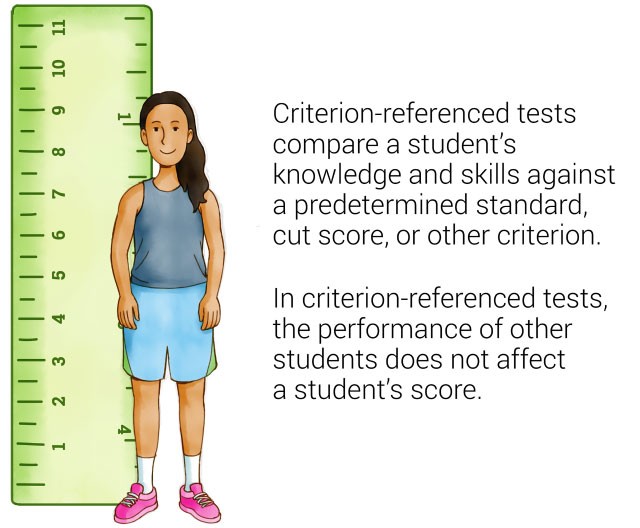
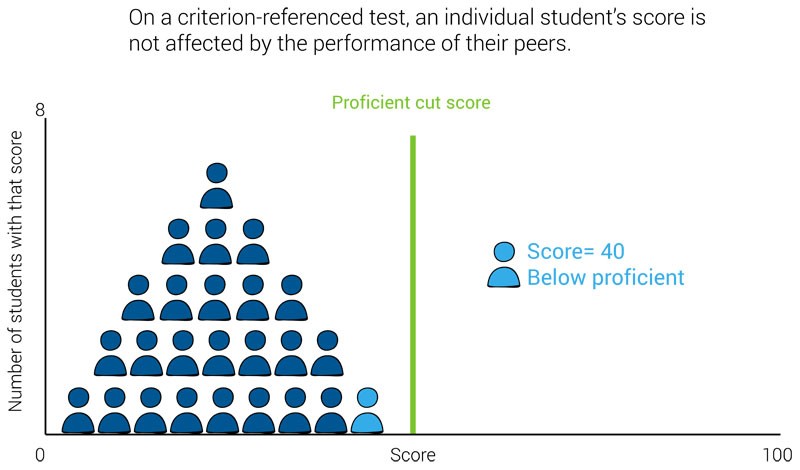
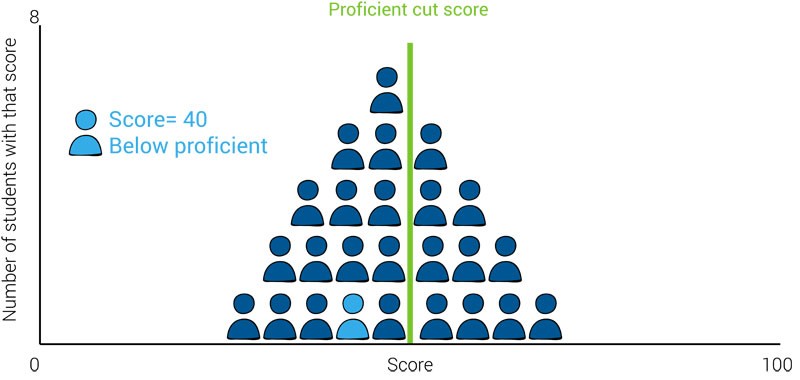
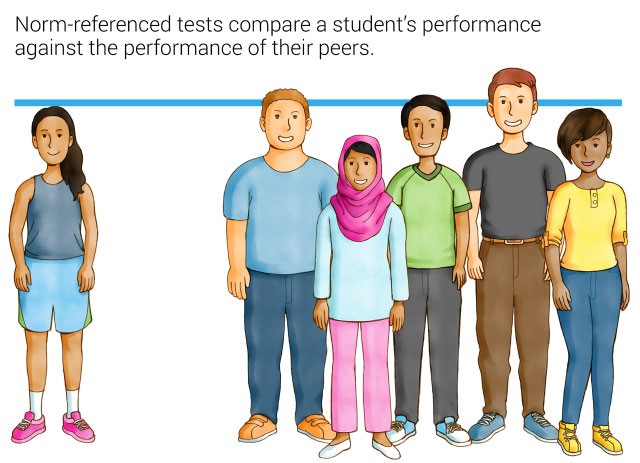
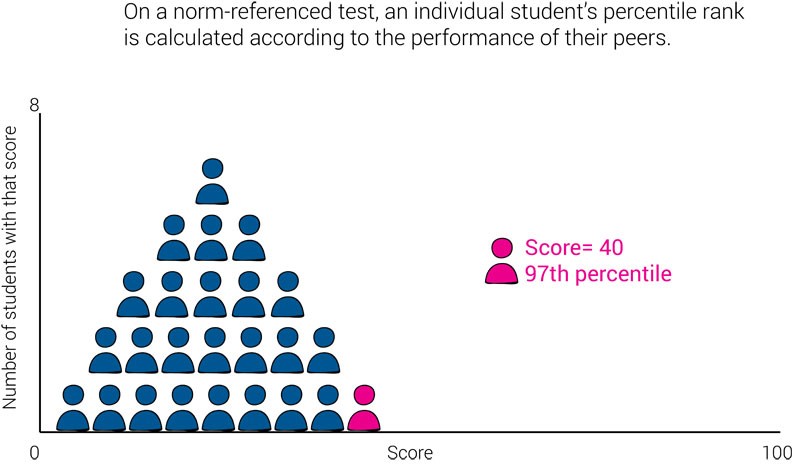
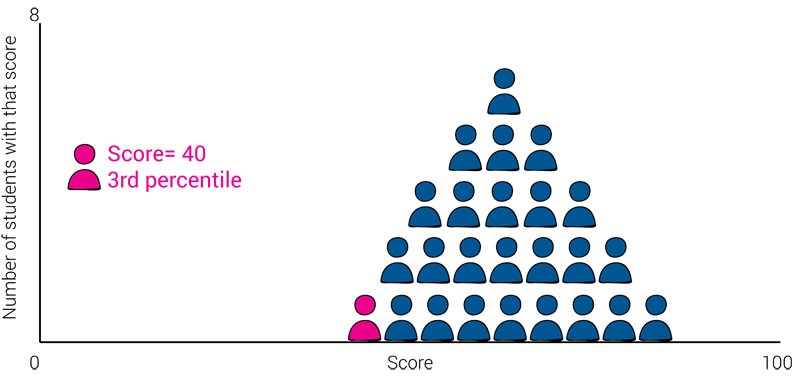
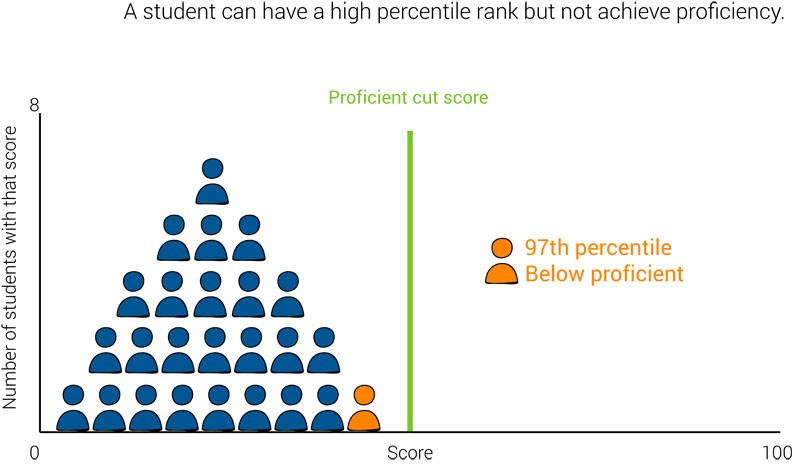
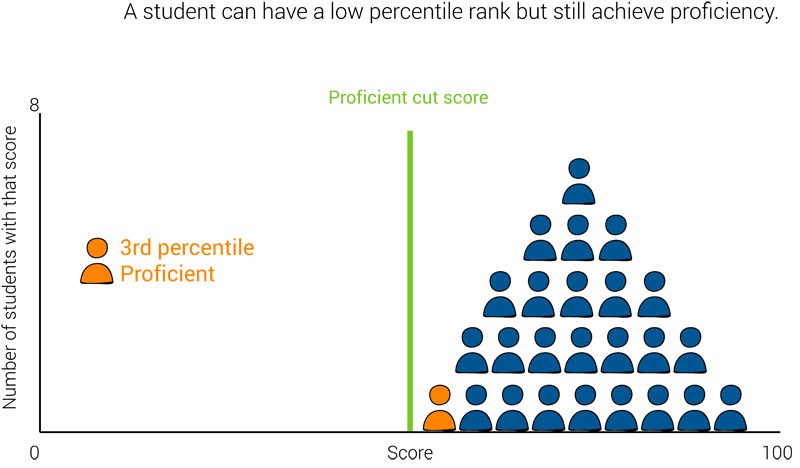
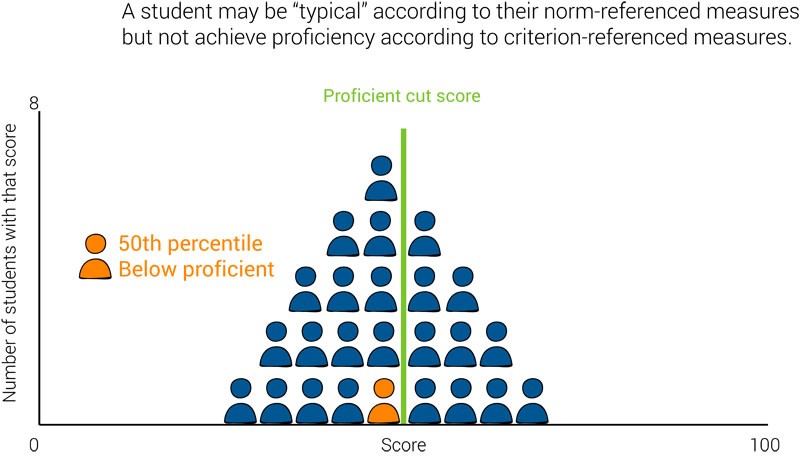
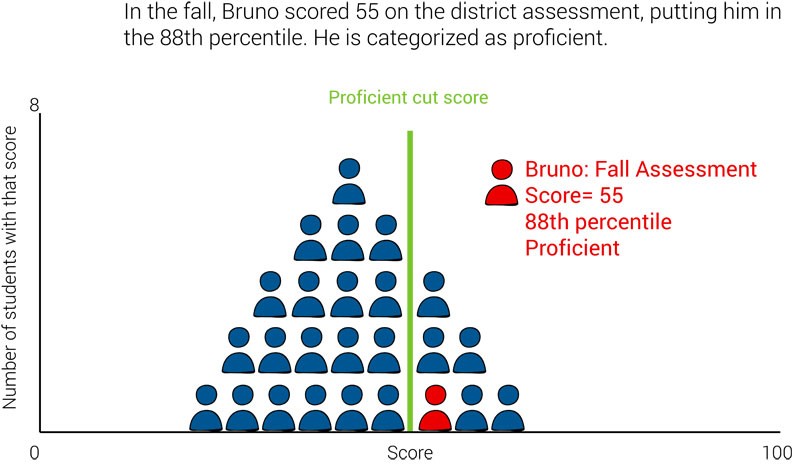
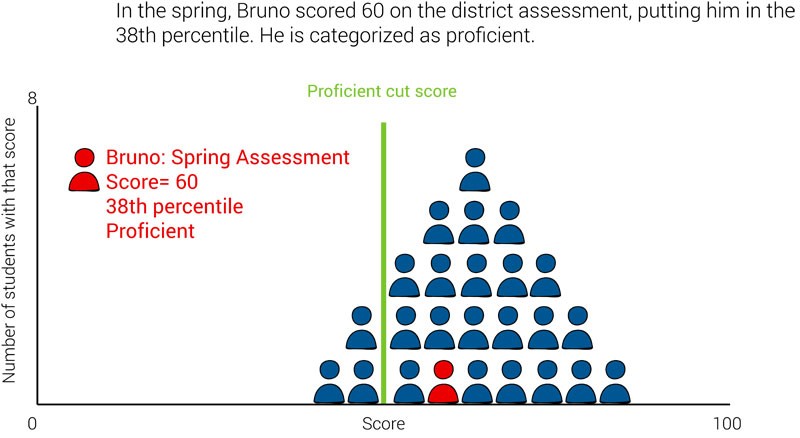
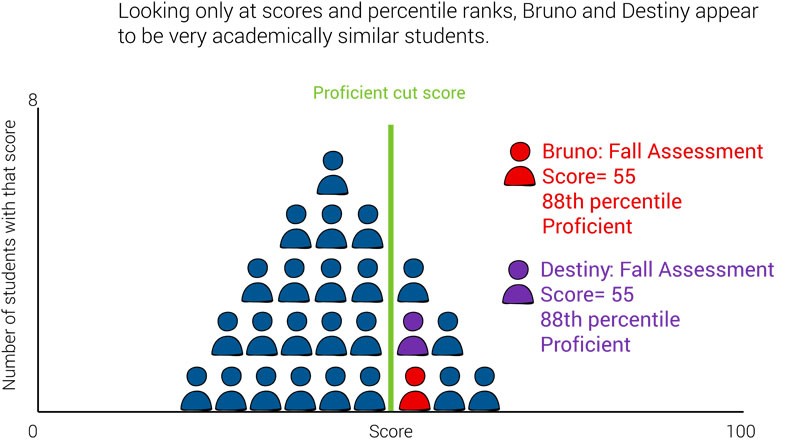
3. How Criterion-Referenced Tests Work
Criterion-referenced tests operate on a straightforward principle: assessing an individual’s competence in relation to a pre-established standard. This section delves into the mechanics of these tests, detailing how they are constructed, administered, and scored to provide meaningful insights into performance.
3.1 Test Development
The development of a criterion-referenced test begins with a thorough analysis of the skills and knowledge to be assessed. This involves:
- Defining the Learning Objectives: Clearly specifying what the test-takers should know or be able to do.
- Creating a Test Blueprint: Outlining the content areas to be covered and the weight assigned to each area.
- Writing Test Items: Developing questions or tasks that accurately measure the defined skills and knowledge.
- Establishing Performance Standards: Setting the criteria for success, often in the form of cut scores that define different performance levels.
3.2 Test Administration
During test administration, it is essential to follow standardized procedures to ensure fairness and consistency. This includes:
- Providing Clear Instructions: Ensuring that test-takers understand the purpose of the test and how to complete it.
- Maintaining a Controlled Environment: Minimizing distractions and ensuring that test-takers have adequate time and resources to complete the test.
- Adhering to Security Protocols: Preventing cheating and maintaining the integrity of the test.
3.3 Scoring and Interpretation
Scoring a criterion-referenced test involves comparing the test-taker’s performance to the established performance standards. This typically involves:
- Assigning Points: Assigning points for correct answers or successful completion of tasks.
- Calculating Total Score: Summing the points to obtain a total score.
- Comparing to Cut Scores: Determining if the total score meets or exceeds the cut scores for different performance levels.
- Providing Feedback: Communicating the results to the test-taker, along with specific feedback on their strengths and weaknesses.
3.4 Ensuring Validity and Reliability
To ensure that a criterion-referenced test is accurate and trustworthy, it is essential to establish its validity and reliability.
- Validity: The extent to which the test measures what it is intended to measure. This can be assessed through content validity (ensuring that the test content is representative of the domain being assessed) and criterion-related validity (correlating test scores with other measures of the same construct).
- Reliability: The consistency of the test scores. This can be assessed through test-retest reliability (administering the same test to the same individuals on two different occasions) and internal consistency reliability (measuring the extent to which the test items are measuring the same construct).
4. Benefits of Using Criterion-Referenced Tests
Criterion-referenced tests offer numerous advantages in various settings, from education to professional development. These benefits stem from their focus on individual mastery and their ability to provide clear, actionable feedback.
4.1 Clear Performance Standards
One of the primary benefits of criterion-referenced tests is that they provide clear and specific performance standards. This clarity helps test-takers understand what is expected of them and what they need to do to succeed.
4.2 Objective Measurement
Criterion-referenced tests are designed to measure performance objectively, reducing the potential for bias. This objectivity ensures that the results are fair and accurate.
4.3 Diagnostic Information
These tests can provide valuable diagnostic information, highlighting areas where the individual excels and areas where they need improvement. This information can be used to tailor instruction or training to meet the individual’s specific needs.
4.4 Alignment with Instruction
Criterion-referenced tests are closely aligned with the instructional objectives, ensuring that the assessment accurately reflects what was taught. This alignment helps to reinforce learning and improve retention.
4.5 Versatility
Criterion-referenced tests can be used in a variety of settings, from classrooms to workplaces, to assess a wide range of skills and knowledge. This versatility makes them a valuable tool for educators, trainers, and employers.
4.6 Measuring Mastery
Criterion-referenced tests directly measure whether an individual has mastered specific skills or knowledge, providing a clear indication of their competence.
5. Limitations of Criterion-Referenced Tests
While criterion-referenced tests offer many benefits, they also have some limitations that should be considered when choosing an assessment method.
5.1 Lack of Comparative Data
Criterion-referenced tests do not provide information about how an individual’s performance compares to that of others. This lack of comparative data can make it difficult to rank individuals or select the top performers.
5.2 Difficulty in Setting Standards
Setting appropriate performance standards can be challenging. If the standards are too high, many individuals may fail the test. If the standards are too low, the test may not accurately measure competence.
5.3 Potential for Narrow Focus
Criterion-referenced tests can sometimes focus too narrowly on specific skills or knowledge, neglecting other important aspects of performance.
5.4 Dependence on Quality of Instruction
The validity of a criterion-referenced test depends on the quality of the instruction or training that the test-takers receive. If the instruction is poor, the test results may not accurately reflect the individuals’ competence.
5.5 Resource Intensive
Developing high-quality criterion-referenced tests can be resource-intensive, requiring significant time and expertise.
5.6 Static Nature
Criterion-referenced tests may become outdated if the skills and knowledge being assessed change over time.
6. Applications of Criterion-Referenced Tests
Criterion-referenced tests are versatile tools with applications in numerous fields. Their ability to assess specific skills and knowledge against predefined standards makes them invaluable in education, professional certification, and various other sectors.
6.1 Education
In education, criterion-referenced tests are used to:
- Assess Student Learning: Determine if students have mastered the concepts taught in class.
- Inform Instruction: Provide teachers with diagnostic information to tailor their instruction to meet students’ needs.
- Evaluate Curriculum: Evaluate the effectiveness of the curriculum and identify areas for improvement.
- Assign Grades: Assign grades based on students’ performance against specific criteria.
6.2 Professional Certification
Criterion-referenced tests are commonly used in professional certification programs to:
- Assess Competence: Determine if candidates meet the required professional standards.
- Ensure Quality: Ensure that certified professionals have the skills and knowledge needed to perform their jobs effectively.
- Maintain Standards: Maintain the integrity of the profession by setting and enforcing high standards.
6.3 Training Programs
In training programs, criterion-referenced tests are used to:
- Evaluate Training Effectiveness: Determine if the training program is achieving its objectives.
- Assess Trainee Performance: Assess trainees’ mastery of the skills and knowledge taught in the program.
- Identify Areas for Improvement: Identify areas where trainees need additional support or training.
6.4 Employment
Employers use criterion-referenced tests to:
- Assess Job Candidates: Evaluate job candidates’ skills and knowledge to determine if they are qualified for the position.
- Evaluate Employee Performance: Evaluate employee performance against specific job requirements.
- Identify Training Needs: Identify employees who need additional training or development.
6.5 Healthcare
In healthcare, criterion-referenced tests are used to:
- Assess Clinical Skills: Evaluate healthcare professionals’ clinical skills and knowledge.
- Ensure Patient Safety: Ensure that healthcare professionals have the skills and knowledge needed to provide safe and effective care.
- Maintain Standards: Maintain the integrity of the healthcare profession by setting and enforcing high standards.
7. Designing Effective Criterion-Referenced Tests
Creating a criterion-referenced test that accurately measures an individual’s competence requires careful planning and execution. The following guidelines can help ensure that your test is valid, reliable, and useful.
7.1 Clearly Define the Learning Objectives
The first step in designing an effective criterion-referenced test is to clearly define the learning objectives. What should the test-takers know or be able to do after completing the instruction or training? The learning objectives should be specific, measurable, achievable, relevant, and time-bound (SMART).
7.2 Create a Test Blueprint
A test blueprint is a detailed plan that outlines the content areas to be covered on the test and the weight assigned to each area. The blueprint should be aligned with the learning objectives and should ensure that the test covers all important aspects of the domain being assessed.
7.3 Write High-Quality Test Items
The test items should be clear, concise, and directly related to the learning objectives. They should also be free from bias and ambiguity. Use a variety of item types, such as multiple-choice, true-false, and essay questions, to assess different types of knowledge and skills.
7.4 Establish Performance Standards
The performance standards should be based on expert judgment and should reflect the level of competence required to perform a specific task or demonstrate mastery of a subject. The standards should be clearly defined and communicated to the test-takers.
7.5 Pilot Test the Test Items
Before administering the test, pilot test the items with a group of individuals who are similar to the test-takers. This will help you identify any problems with the items, such as ambiguity or difficulty.
7.6 Analyze Test Results
After administering the test, analyze the results to determine the test’s validity and reliability. Use statistical methods to assess the test’s internal consistency and to identify any items that are not performing well.
7.7 Provide Feedback to Test-Takers
Provide test-takers with feedback on their performance, highlighting their strengths and weaknesses. This feedback can be used to tailor instruction or training to meet the individual’s specific needs.
8. Case Studies: Criterion-Referenced Tests in Action
Examining real-world examples of criterion-referenced tests can provide valuable insights into their practical application and effectiveness. Here are a few case studies that illustrate how these tests are used in different settings.
8.1 Case Study 1: Assessing Math Skills in Elementary School
An elementary school uses a criterion-referenced test to assess students’ math skills at the end of each grade level. The test covers specific topics taught during the year, such as addition, subtraction, multiplication, and division. The test includes a variety of item types, such as multiple-choice questions, word problems, and computation problems.
The performance standards are based on the state’s math standards and are clearly defined for each grade level. Students who meet or exceed the standards are considered proficient in math. Students who do not meet the standards receive additional support and instruction.
The test results are used to inform instruction and to evaluate the effectiveness of the math curriculum. The teachers use the results to identify students who need additional help and to tailor their instruction to meet their specific needs. The school administrators use the results to evaluate the effectiveness of the math curriculum and to identify areas for improvement.
8.2 Case Study 2: Evaluating Training Program for Nurses
A hospital uses a criterion-referenced test to evaluate the effectiveness of a training program for nurses. The program is designed to teach nurses how to administer medications safely and effectively. The test covers specific topics taught during the program, such as medication dosages, routes of administration, and side effects.
The test includes a variety of item types, such as multiple-choice questions, simulations, and case studies. The performance standards are based on the hospital’s medication administration policies and procedures. Nurses who meet or exceed the standards are considered competent in medication administration. Nurses who do not meet the standards receive additional training and supervision.
The test results are used to evaluate the effectiveness of the training program and to ensure that nurses are competent in medication administration. The hospital administrators use the results to evaluate the effectiveness of the training program and to identify areas for improvement. The nurse managers use the results to ensure that nurses are competent in medication administration and to provide additional support and supervision as needed.
8.3 Case Study 3: Certifying Project Management Professionals
A professional organization uses a criterion-referenced test to certify project management professionals. The test is designed to assess candidates’ knowledge and skills in project management. The test covers specific topics, such as project planning, execution, monitoring, and control.
The test includes a variety of item types, such as multiple-choice questions, simulations, and case studies. The performance standards are based on the organization’s project management standards. Candidates who meet or exceed the standards are certified as project management professionals.
The test results are used to ensure that certified project management professionals have the knowledge and skills needed to perform their jobs effectively. The organization uses the results to maintain the integrity of the profession by setting and enforcing high standards.
9. Future Trends in Criterion-Referenced Testing
The field of criterion-referenced testing is constantly evolving, with new technologies and methodologies emerging to improve the accuracy and effectiveness of assessments. Here are a few trends to watch in the coming years.
9.1 Technology Integration
Technology is playing an increasingly important role in criterion-referenced testing. Computer-based testing, online proctoring, and automated scoring are becoming more common, making testing more efficient and accessible.
9.2 Adaptive Testing
Adaptive testing is a method of testing where the difficulty of the test items is adjusted based on the test-taker’s performance. This allows for more accurate and efficient measurement of competence.
9.3 Simulation-Based Assessment
Simulation-based assessment involves using simulations to assess test-takers’ skills and knowledge in realistic scenarios. This type of assessment is particularly useful for assessing complex skills, such as clinical decision-making.
9.4 Big Data Analytics
Big data analytics is being used to analyze test data and identify patterns and trends. This information can be used to improve the design and administration of criterion-referenced tests.
9.5 Personalized Learning
Criterion-referenced tests are being used to personalize learning experiences for students. By assessing students’ skills and knowledge, educators can tailor instruction to meet their specific needs.
10. COMPARE.EDU.VN: Your Partner in Understanding Assessments
Navigating the world of educational assessments can be challenging. At COMPARE.EDU.VN, we provide clear, objective comparisons of various testing methods, including criterion-referenced and norm-referenced tests. Our goal is to empower you with the knowledge needed to make informed decisions about your educational journey or professional development.
10.1 Comprehensive Comparisons
COMPARE.EDU.VN offers in-depth comparisons of different assessment types, highlighting their strengths, limitations, and appropriate use cases.
10.2 Expert Insights
Our team of experts provides insights and analysis to help you understand the nuances of each assessment method.
10.3 User-Friendly Interface
Our website is designed to be user-friendly and easy to navigate, making it simple to find the information you need.
10.4 Up-to-Date Information
We stay up-to-date on the latest trends and developments in the field of educational assessment, ensuring that you have access to the most current information.
10.5 Valuable Resources
COMPARE.EDU.VN is your go-to source for understanding educational assessments. Whether you’re a student, educator, or professional, we have the resources you need to succeed.
10.6 Making Informed Decisions
With COMPARE.EDU.VN, you can confidently compare different educational paths, secure in the knowledge that you have access to clear, reliable information.
Confused about which assessment method is right for you or your organization? Do you need help understanding the results of a criterion-referenced test? Visit COMPARE.EDU.VN today to explore our comprehensive comparisons and expert insights. Let us help you make informed decisions and unlock your full potential. Our dedicated team is available to answer your questions and provide personalized guidance. Contact us at 333 Comparison Plaza, Choice City, CA 90210, United States. Reach out via Whatsapp at +1 (626) 555-9090, or visit our website at COMPARE.EDU.VN.
FAQ: Criterion-Referenced Tests
Q1: What is a criterion-referenced test?
A criterion-referenced test compares a person’s performance to a predefined standard or criterion, focusing on whether they have mastered specific skills or knowledge.
Q2: How does a criterion-referenced test differ from a norm-referenced test?
A criterion-referenced test measures performance against a set standard, while a norm-referenced test compares performance to a group.
Q3: What are some examples of criterion-referenced tests?
Examples include classroom exams, driver’s license tests, and professional certification exams.
Q4: What are the benefits of using criterion-referenced tests?
Benefits include clear standards, objective measurement, diagnostic information, and alignment with instruction.
Q5: What are the limitations of criterion-referenced tests?
Limitations include a lack of comparative data, difficulty in setting standards, and a potential for narrow focus.
Q6: How are criterion-referenced tests used in education?
In education, these tests assess student learning, inform instruction, and evaluate curriculum effectiveness.
Q7: How are performance standards established for criterion-referenced tests?
Performance standards are based on expert judgment and reflect the level of competence required.
Q8: What is the role of technology in criterion-referenced testing?
Technology enhances testing efficiency and accessibility through computer-based testing and automated scoring.
Q9: How can I design an effective criterion-referenced test?
Clearly define learning objectives, create a test blueprint, write high-quality test items, and establish performance standards.
Q10: Where can I find more information about criterion-referenced tests?
Visit compare.edu.vn for comprehensive comparisons, expert insights, and valuable resources.
By understanding the principles and applications of criterion-referenced tests, you can gain valuable insights into individual performance and make informed decisions in education, training, and professional development. Remember, whether you’re seeking to assess your own skills or evaluate the effectiveness of a program, criterion-referenced tests provide a powerful tool for measuring mastery and achieving success.
